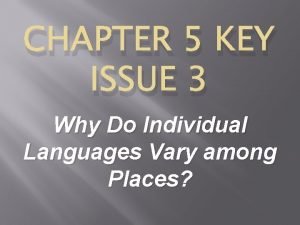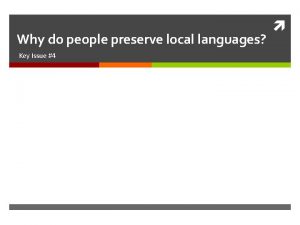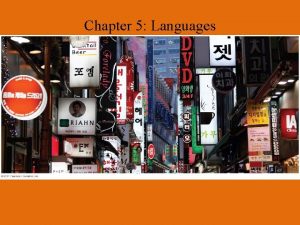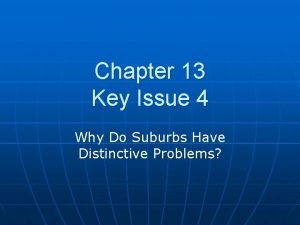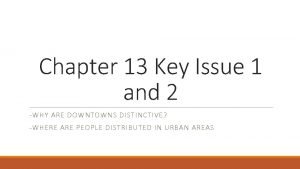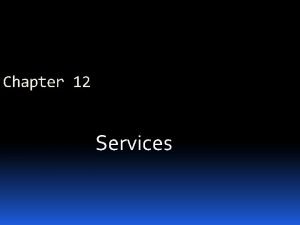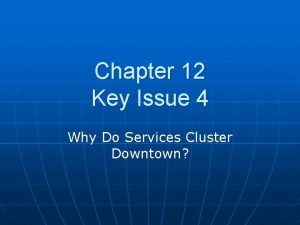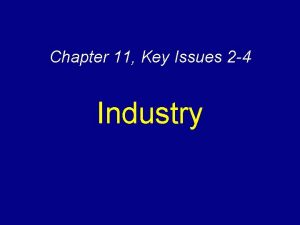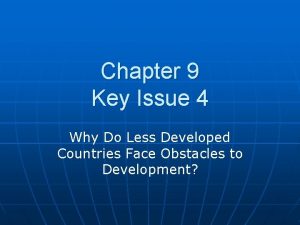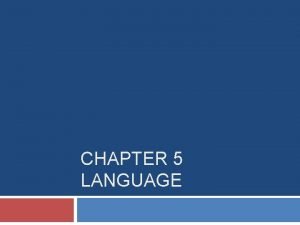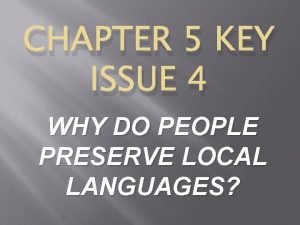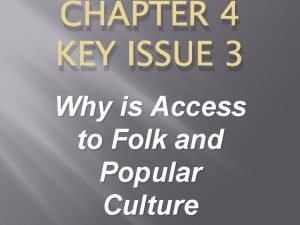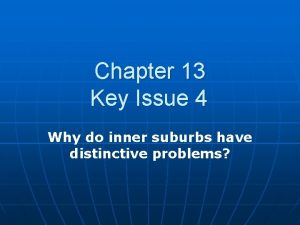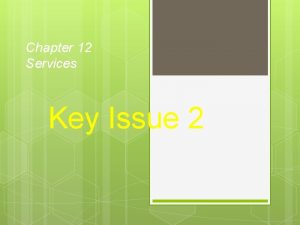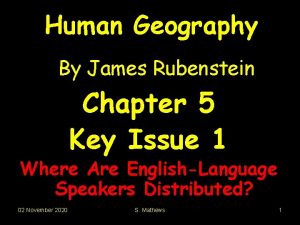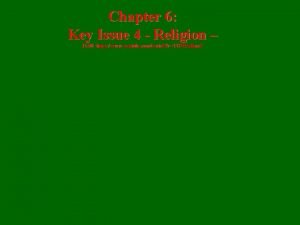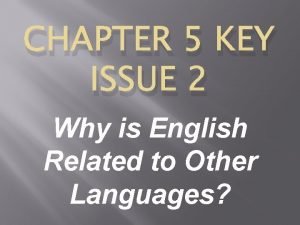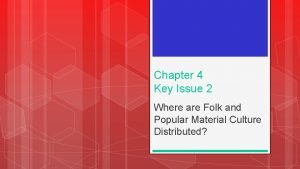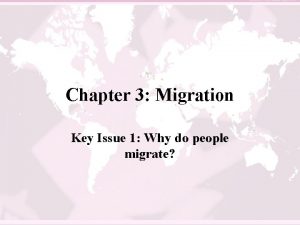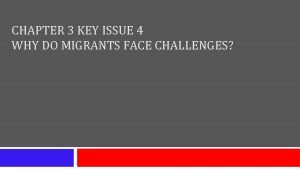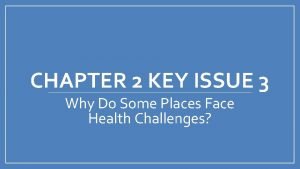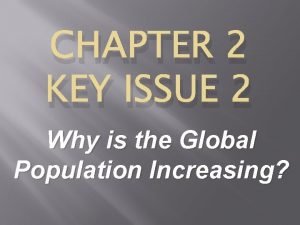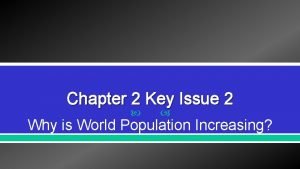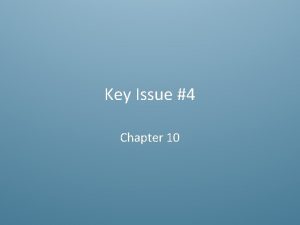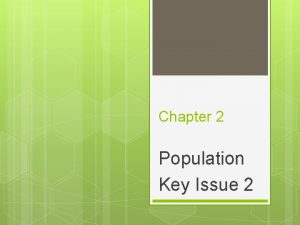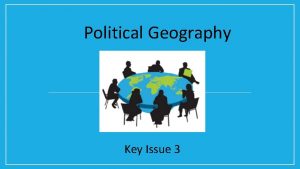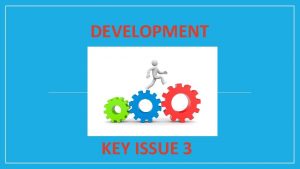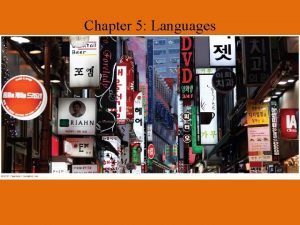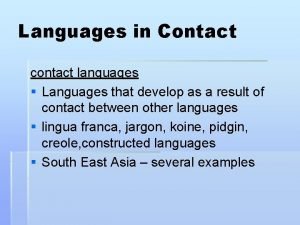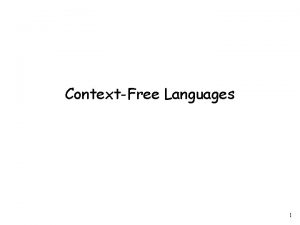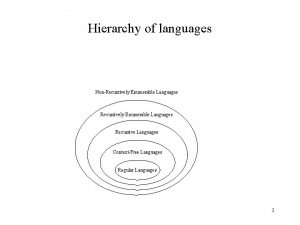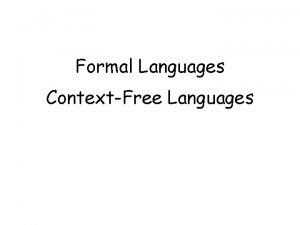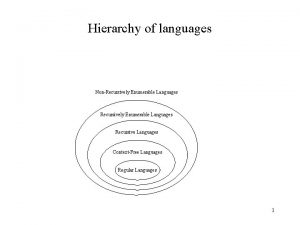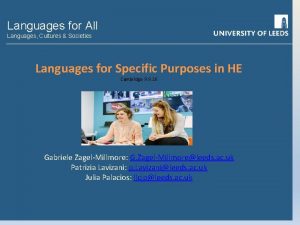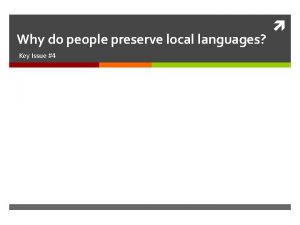Chapter 5 Languages Key Issue 1 Where Are

























- Slides: 25

Chapter 5: Languages

Key Issue #1 Where Are the World’s Languages Distributed? L. O. 5. 1. 1: Understand how languages are classified Languages are classified as institutional, developing, vigorous and endangered L. O. 5. 1. 2: Identify the worlds largest language families The two largest language families are Indo-European and Sino-Tibetan L. O. 5. 1. 3: Identify the names and distribution of the two largest language families Indo-European I predominant language family of Europe, Latin America, North America, South Asia and South Pacific. Sino-Tibetan is the predominant language of family of East Asia L. O. 5. 1. 4: Identify the distribution of the largest language families other than Indo-European and Sino-Tibetan The remaining major language families are centered in Asia

What Are Local & Popular Cultures? • Language is one of the oldest and most geographically diverse cultural traits on Earth. • The distribution of language around the world is the direct result of migration, and the interaction or isolation of language speakers.

Introducing Languages • Currently, about 5, 000 to 7, 000 languages remain, with Africa and Asia being the most linguistically rich continents. • The world’s greatest concentration of linguistic diversity is on the island of New Guinea – Rugged terrain and social mores limit interactions and have enable some 900 languages to persist into the present day.

Classifying Languages • Of the worlds 7, 102 languages, Many countries (578) designate at least one institutional language as an official language which is then used in government, law, education and media. • Languages are classified (according to Ethnologue) as: • (1) Institutional – Language has been developed to the point that it is used and sustained by institutions beyond the home and community. • (2) Developing – These languages are in the initial stages of development. Literature in a standardized form is being used by some though this is not yet widespread or sustainable.

Classifying Languages • (3) Vigorous – These are not developing, but neither are they endangered since they enjoy vigorous face-to-face use in daily life by all generations. • (4) Endangered – Typically do not have a literary element and numbers of speakers are declining because another language is spoken by predominantly younger population


Organizing Language Families • Languages are organized into language families – a collection of languages related through a common ancestral language (the same original tongue) long ago. • Although all languages in a language family have a common origin, two members of the same family may sound very different depending on how long ago the two languages branched off.

Organizing Language Families • A language branch is a collection of languages within a family related through a common ancestral language within the past several thousand years. • About 50% of the world’s people speak languages belonging to the Indo-European branch family – Branches include the Romance branch (Spanish, French) and Germanic Branch (English, German).

Organizing Language Families • The smallest organization and the most recent is the language group -A collection of languages within a branch with a common origin in the recent past and containing similar grammar and vocabulary. • This can be represented by actual languages like English and German which are part of the Germanic Branch.


Two Largest Language Families: Indo. European • Indo –European , the most widely used language family is the predominant on in Europe, South Asia and North and Latin America • It has eight branches including four that are widely used – Indo. Iranian, Germanic, Romance and Balto-Slavic.

Two Largest Language Families: Sino. Tibetan • Encompasses languages spoken in the People’s Republic of China – the world’s most populous state- and several smaller countries in Southeast Asia. • No single Chinese language • Mandarin (spoken by ¾ of Chinese people) is the most-used language in the world and the official language of both the People’s Republic of China and Taiwan.

Two Largest Language Families: Sino. Tibetan

Southeast Asia Language Families: • The three Largest language families of the Southeast Asia are Austronesian, Austro- Asiatic and Tai-Kadai • Austronesian – 6% of the worlds people – mostly in Indonesia (4 th most populous state) – Javanese spoken by 84 million people

Southeast Asia Language Families: • Austro-Asiatic- 2% of worlds people – Vietnamese is the most spoken. • Tai-Kadai –Mainly spoken in Thailand portion of China

East Asia Language Families: • Two most widely used language families outside of China are Japanese and Korean. • Korean – More than half of the Korean vocabulary derives from Chinese Words. • Japanese and Chinese words are the principal sources for creating new words to describe new technology and concepts.

Other Asian Language Families: • Dravidian languages are the principal ones in southern India – two most widely used are Telugu and Tamil.

Other Asian Language Families: • Altaic (altayic) language with most speakers is Turkish -became official language of several countries that gained independence when Soviet Union broke up—e. g. , Azerbaijan, Kazakhstan, and Turkmenistan.

Other Asian Language Families: • Uralic – Uralic languages are traceable back to the Ural mountains of present day Russia – Estonians, Finns and Hungarians speak languages that belong to the Uralic family.

African Language Families: • Afro-Asiatic- Arabic is major language an official language in two dozen countries of Southwest Asia and North Africa. • One of the six official languages in U. N. • 206 million people speak and write the official language Arabic.

African Language Families: • Niger-Congo- More than 95% of the people in sub-Saharan Africa speak languages of Niger-Congo.

African Language Families: • Swahili is official language only in Tanzania but is first language of 15 million people and second language of 25 million more. • Developed through interaction among African groups and Arab traders, so its vocabulary has strong Arabic influences.

African Language Families: • Nilo-Saharan- Spoken by 43 million people in north-central Africa. • Divisions within the Nilo. Saharan family exemplify the problem with classifying African languages –Few speakers but divided into six branches, plus numerous groups and subgroups.

America’s Other Language Family: • Quechuan (catch-juan)- Most widely used language family in the Western Hemisphere other than Indo. European. • It speakers live primarily in the Andes Mountains of western South America.
 Mikael ferm
Mikael ferm Key issue 3 why do individual languages vary among places
Key issue 3 why do individual languages vary among places Why do people preserve local languages
Why do people preserve local languages Key issue 1 where are languages distributed
Key issue 1 where are languages distributed Chapter 13 key issue 4
Chapter 13 key issue 4 Chapter 13 key issue 2
Chapter 13 key issue 2 Chapter 12 key issue 1
Chapter 12 key issue 1 Chapter 12 key issue 4
Chapter 12 key issue 4 Chapter 11 key issue 4
Chapter 11 key issue 4 Chapter 9 key issue 4
Chapter 9 key issue 4 Language
Language Chapter 5 key issue 4
Chapter 5 key issue 4 Chapter 4 key issue 3
Chapter 4 key issue 3 Chapter 13 key issue 4
Chapter 13 key issue 4 Chapter 12 key issue 2
Chapter 12 key issue 2 Chapter 5 key issue 1 ap human geography
Chapter 5 key issue 1 ap human geography Chapter 6 key issue 4
Chapter 6 key issue 4 Chapter 5 key issue 2
Chapter 5 key issue 2 Chapter 4 key issue 2
Chapter 4 key issue 2 Chapter 3 key issue 1
Chapter 3 key issue 1 Key issue 4 why do migrants face obstacles
Key issue 4 why do migrants face obstacles Key issue 3 why do some places face health challenges
Key issue 3 why do some places face health challenges Chapter 2 key issue 2
Chapter 2 key issue 2 Chapter 2 key issue 1
Chapter 2 key issue 1 Is steel bulk gaining
Is steel bulk gaining Canvas key partners
Canvas key partners

